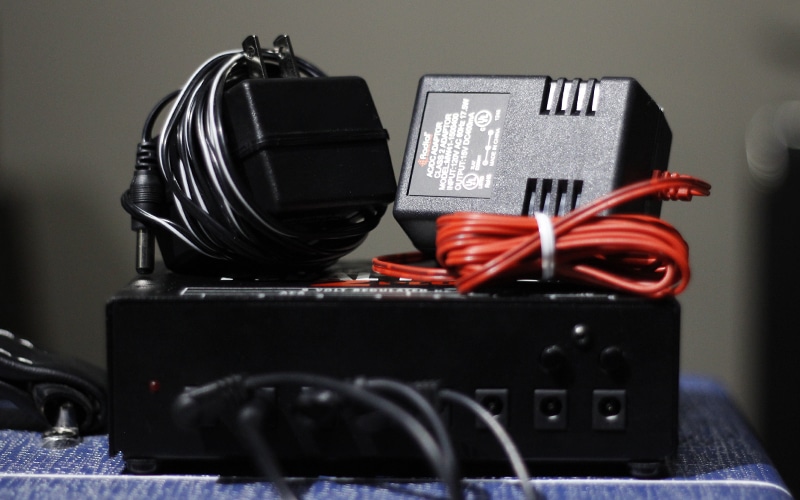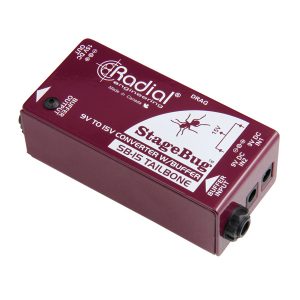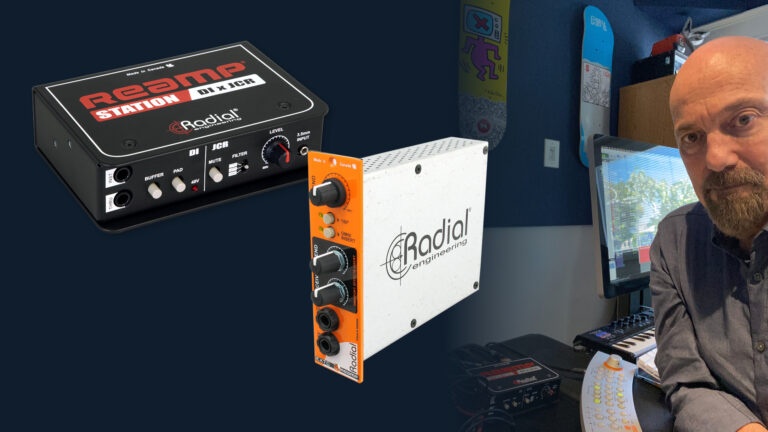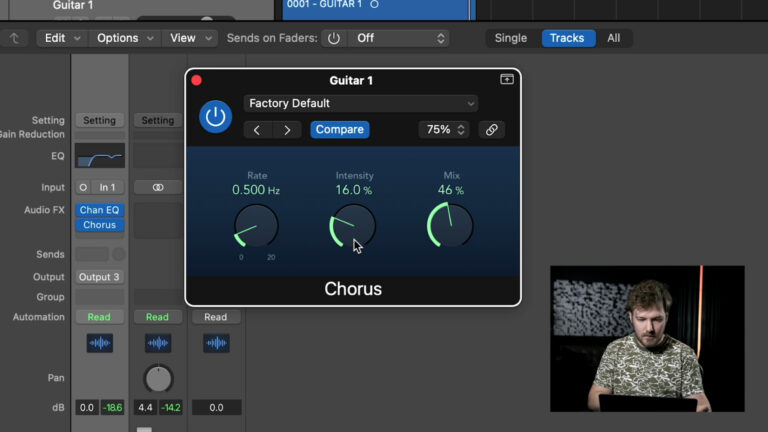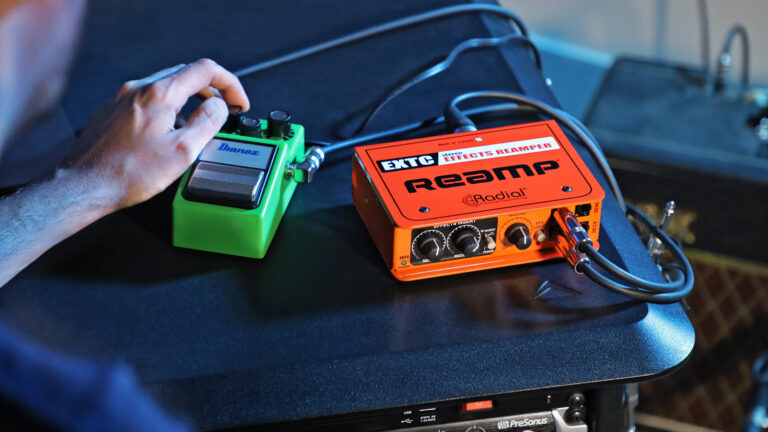One of the most common questions we get asked here at Radial is, “How can I power your products without using the external power supply that was included with the unit?”
Before we get into that, we need to understand the basic language of electricity to understand how Radial “powertools” get their power.
You’ve heard about Voltage, Current and Polarity before, but in case you can’t remember back to high school science class, here’s a simple analogy:
Think of a water hose when you are washing your car. It has pressure, an amount of flow and a direction to the flow of water. Think of voltage as the pressure, current as the amount of flow and polarity as the direction that the current flows (see figure 1).
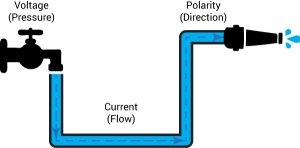
Voltage
Measured in Volts (V), voltage is the pressure of the electricity that gets sent to your product. Pedals can be powered with varying voltages ranging from 5V all the way up to 24V, however, you will find that the majority of effects pedals require 9V as BOSS® set this as the standard back in the 1970’s.
Important: With Voltage, you want the amount you supply to match what the product needs. Too much voltage will cause damage, whereas not enough will simply not power the device. To summarize, if your device requires 12V of power, use a 12V adapter.
Current
There are two types of current: Alternating Current (AC) and Direct Current (DC).
Current is measured in Amps (A). In the effects pedals world, most devices do not require this much current and therefore you will typically be dealing with Milliamps (mA) which is one-thousandth of an Amp. Every power supply will specify how many mA of current it has available while every pedal will specify the amount of current which it requires for operation.
Note: the current provided by the power supply will typically exceed the amount of current required by the device, the device in turn only ‘uses’ the amount of current necessary leaving additional current available for other devices in the chain.
Polarity
Like the North and South Poles of the Earth, there are two separate polarities when dealing with power supplies: center-pin negative and center-pin positive. The majority of guitar pedals on the market require center-pin negative, and therefore the result is that the majority of power supplies output center-pin negative polarity (BOSS, Voodoo Lab®, Cioks®, Truetone®, Walrus®, etc..).
Using a power supply with matched polarity for a specific device is crucial – there is no quicker way to damage your device if the polarity is inverted. We always recommend that the consumer checks both the required polarity of the device and what the power adapter outputs before using a 3rd party power supply.
More often than not, the pedal will have a marking above or below the power adapter which states the proper polarity required. Whichever side the solid circle in the center is open to is the correct polarity (see figure 2). If this diagram is not available on the physical device, consult the product’s user guide.
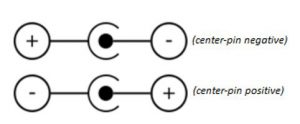
Solutions for 15V Radial Pedals
The reason why many of you are here: how do you use a Radial 15V pedal or device without the included external power supply?
Radial built its legacy on employing a 12AX7 tube in the pedals. For this reason, we found that 15V power supplies were needed as 9V did not provide sufficient power to drive the tube. While the new line of distortion pedals from Radial all operate off of standard 9V, some still require 15V for powering—after all, they are powertools!
If you do not want to use the power adapter that is supplied with your Radial device(s), we recommend using an isolated power supply (whereby each power outlet is transformer isolated from one another). This will prevent the occurrence of ground loops and ensure that pedal noise levels are kept at a minimum.
However, this presents a problem in itself as 99% of isolated power supplies output a 9V center-pin negative polarity rather than the 15V center-pin positive requirement of many Radial products. Radial’s solution to this problem was the StageBug SB-15 (see figure 3).
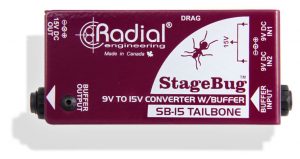
The SB-15 is a small device that acts as a signal buffer and will also convert two 9v center-pin negative power sources into one 15V center-pin positive power source. The available current-result will not change, i.e. using two 9V 200mA (center-pin negative) sources will result in an output from the SB-15 of 15V 200mA (center-pin positive).
A second, but less ideal option for powering your 15V Radial device(s) is to simply use an 18v outlet with adequate current available (do note that this option will slightly shorten the lifespan of the device’s internal voltage regulators from 20 years to 18 years). To complete this process, you will likely require a standard 2.1mm barrel-connector polarity reverse cable to feed it the device the proper center-pin positive polarity.
Tying It All Together
Now that you understand the difference between voltage, current and polarity, it’s time to put it all together. Here is a 3-step formula you should always follow to ensure that you are powering your devices(s) correctly:
- Ensure that your power source and the device being powered are both the same polarity (+/-)
- Make sure that the power supply meets the required amount of voltage (V)
- Make sure that the power supply meets or exceeds the amount of current (mA) required
Hopefully this helps with any uncertainties you may have regarding powering guitar pedals. As you can see, it’s not rocket science! If you still find yourself confused or have any further questions, please feel free to email us directly at info@radialeng.com. Otherwise, power up those pedals and have fun with your music!

